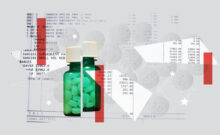Greater telephone wait times, but not abandonment rates, were associated with lower patient perceptions of their ability to obtain urgent care in a timely manner.
ABSTRACT
Objectives: There is little research on the relationship between call center performance and patient-centered outcomes. In this study, we quantified the relationships between 2 measures of telephone access, average speed of answer (ASA) and abandonment rate (AR), and patient satisfaction outcomes within the Veterans Health Administration (VHA).
Study Design: We analyzed 2015 and 2016 data from the Survey of Healthcare Experiences of Patients and linked them with administrative data to gather features of the patient visit and monthly measures of telephone access for each medical center.
Methods: We used mixed effects logistic regression models to estimate the effects of ASA and AR on a variety of access and satisfaction outcomes. Models were adjusted for patient-level demographics, time-varying facility-level characteristics, features of the patient visit, and facility-level random effects to control for care quality and case mix differences.
Results: The VHA made substantial strides in both access measures between 2015 and 2016. We found that a center’s ASA was inversely associated with patients’ perceptions of their ability both to access urgent care appointments and to do so in a timely manner. In contrast, telephone AR was not associated with any of the patient satisfaction outcomes.
Conclusions: Our results associate decreased telephone waits with improved perceptions of urgent care access even without concomitant decreases in observed appointment waits. These findings may have important implications for regulators as well as for healthcare organizations that must decide resource levels for call centers, including hospitals, federal health insurance exchanges, and insurers.
Am J Manag Care. 2019;25(9):In Press
Takeaway Points
Using survey data from 2015 and 2016, we conclude that telephone access has important consequences for patient satisfaction. We show that:
Longer telephone wait times were associated with decreases in patients’ perceived ability to access urgent care appointments and to do so in a timely manner.
There was no clear association between call abandonment rates and patients’ perceptions of healthcare access or satisfaction with their care.
If hospitals and providers are to become more patient centered, attention is needed to how patients are served when calling for appointments and medical questions.
For many patients, picking up the telephone is the first step in their engagement with the healthcare system. Hospitals and payers each have independent call centers to assist patients with medical and administrative questions, appointments, billing, and more. A 2015 survey of healthcare call center leadership found that many of these call centers are long established, and an overwhelming majority (93%) are managed in house. Most respondents predicted that service levels, staffing, and the importance of telephone-based services will grow in coming years.1 Additionally, the Affordable Care Act imposed requirements for state and federal health insurance exchanges to operate telephone hotlines for citizens, under guidelines promulgated by HHS.2
Two of the largest efforts to collect data on call center performance, at least for public programs, are operated by CMS and the Veterans Health Administration (VHA). CMS has the authority to monitor call centers for Medicare Advantage organizations, Prescription Drug Plan sponsors, and Medicare/Medicaid insurers under 42 CFR 432.128(d)(1). CMS employs secret shoppers to collect a variety of call center performance metrics and conduct quarterly “timeliness studies” to evaluate call center performance. A call center is assigned a passing grade if the average hold time is less than 2 minutes and if fewer than 5% of calls are disconnected. Additionally, summary reports of other performance metrics are provided back to the call center but are not used for assessment purposes.3
VHA, the largest integrated healthcare system in the United States, also provides timely telephone services, including 24/7 telephone access to clinical staff trained to provide healthcare advice and information, to all veterans receiving care at its facilities. Facility-level telephone data and a variety of care quality measures are used to summarize and improve medical center performance. To accelerate improvement, VHA established a nationwide initiative to improve telephone access in 2009-2010. The initiative included components such as the installation of automatic call distribution systems, improved training and monitoring of call center teams, and the creation of multidisciplinary teams at participating medical centers to test and implement quality improvement strategies.4 Timely telephone services are currently assessed by 2 measures: average speed of answer (ASA) and abandonment rate (AR). The VHA’s goal for each facility is to have an ASA of less than or equal to 30 seconds and an AR of less than or equal to 5%.5
There is little research on the relationship between specific measures of call center performance and patient-centered outcomes. Within the healthcare literature, studies have found that hold times, staff courtesy, whether staff provided requested medical information or help,6,7 and the number of transfers4 were all related to overall patient satisfaction with care. Other measures cited as important in the nonhealthcare literature include first-call resolution, AR, ASA, total call volume, and average talk time, among others.8,9 These earlier efforts had several limitations. For instance, they generally involved relatively small sample sizes and a single outcome measure (overall patient satisfaction with care).
In this study, we quantified the relationship among multiple measures of telephone access and satisfaction within the VHA. Using Survey of Healthcare Experiences of Patients (SHEP) data on primary care visits to the VHA during federal fiscal years (FYs) 2015 and 2016, we examine whether improvements in clinic-level telephone access measures led to concomitant improvements in a wide range of patient-reported outcomes. To our knowledge, no previous work has taken advantage of this large, national data set to examine these relationships. It is important for hospitals, payers, and other healthcare organizations such as CMS to understand whether telephone access is meaningfully associated with patient perceptions of care quality and access. Without such evidence, insufficient resources may be directed to call centers, and interventions to improve call center performance may not include the metrics that matter most for patient satisfaction.
METHODS
Sample Selection
These analyses used VHA telephone access administrative measures to predict self-reported patient satisfaction with care. Data for this study came from the FYs 2015 and 2016 SHEP outpatient cohorts, which were the most recent years of data available during the study period. We did not use data from before 2015 due to changes in the SHEP sampling methodology that could confound the analysis. SHEP is a nationwide mail survey distributed to veterans after a visit to a VHA facility that seeks to obtain veterans’ perceptions of their care. For outpatient care, a simple random sample of patients with completed appointments at every VHA facility nationwide is selected each month. Thus, SHEP may be considered a repeated cross-sectional survey. The overall response rates in 2015 and 2016 were 43% and 41%, respectively.






